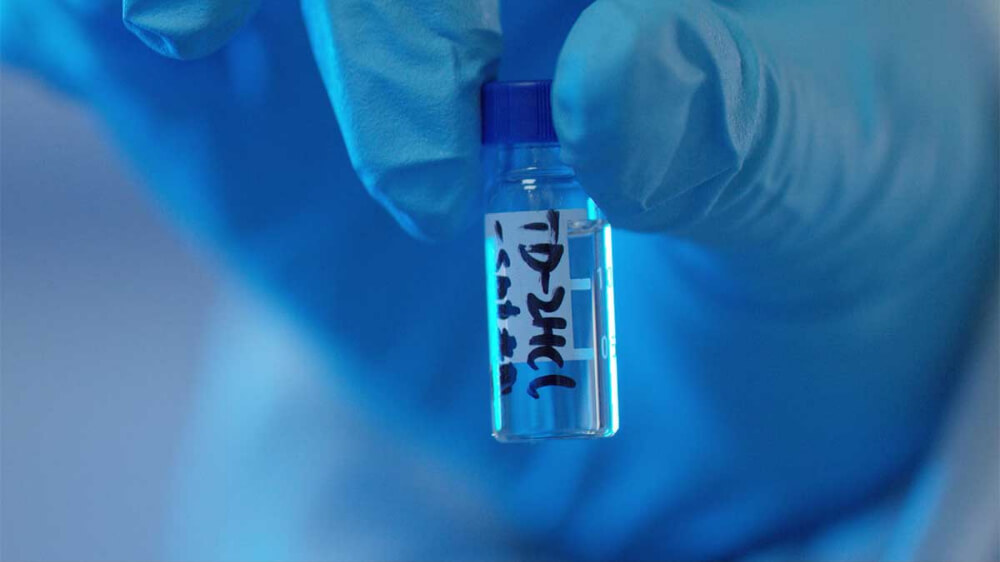



Business Inquiry
Global:
Email:marketing@medicilon.com
+1(781)535-1428(U.S.)
0044 7790 816 954 (Europe)
China:
Email: marketing@medicilon.com.cn
Tel: +86 (21) 5859-1500



A new technique for probing the functions of genes and proteins works by enabling the laser-directed movement of proteins from one cellular location to another. The technique, a form of optogenetics, has already been used to export an epigenetically active protein from the nucleus. Soon after this relocation was accomplished, a rapid fading of particular kind of epigenetic mark occurred, suggesting that epigenetic processes are faster than previous studies had suggested.

The optogenetic technique involves the use of a three-part light switch, a construct comprising the photosensitive AsLOV2 protein, a short amino acid sequence that acts as a kind of shipping label, and a fluorescent protein.
The first component, the AsLOV2 protein, is a “photocage” that opens and closes in response to laser light. When it opens, it exposes the second component, the shipping label, which consists of a nuclear export signal. These two components give the light switch the ability to drive proteins out of the nucleus, provided the light switch is both attached to a protein of interest and also illuminated by laser light. The third component, the fluorescent protein, allows protein movements to be tracked in real time.
The light switch was developed by scientists based at the University of North Carolina (UNC) led by Brian Kuhlman, Ph.D. a professor of biochemistry and biophysics. According to Dr. Kuhlman, the light switch demonstrates the value of a technique that can rapidly probe the function of genes and proteins.
“By the time you get your hands on a knockout mouse for a particular gene or protein, the cells that had that protein have already adapted to their new circumstances of having one of its genes taken away; everything has changed,” said Dr. Brian Kuhlman. “By using light, we can inactivate a protein instantaneously. We can do it in a specific type of cell, at a specific moment in development. This can give us the resolution we need to truly understand the function of a particular protein.”
Typically, when scientists want to learn about a biological system (a cell, organ, or animal), they make a change and then observe what happens. In biology, this is often accomplished by “knocking out,” or deleting, a specific gene. For instance, a researcher interested in whether a protein is important in cancer might remove the gene for that protein and then look to see how it affects tumor formation. One of the problems with this method is that it creates a permanent change, and therefore the biological system has a chance to compensate before anyone can study it.
The UNC researchers presented their light switch in an article that appeared April 18 in Nature Chemical Biology, in an article entitled, “Light-Induced Nuclear Export Reveals Rapid Dynamics of Epigenetic Modifications.” This article described what happened when the researchers embedded their light switches into two proteins called LexA and Bre1 that act on DNA and thus normally reside in the nucleus.
“Fusing the chromatin modifier Bre1 to the photoswitch, we achieved light-dependent control of histone H2B monoubiquitylation in yeast, revealing fast turnover of the ubiquitin mark,” wrote the article’s authors. “Moreover, this inducible system allowed us to dynamically monitor the status of epigenetic modifications dependent on H2B ubiquitylation.”
In other words, the researchers found that the proteins traveled into the cytoplasm after photoactivation. What’s more, they showed that this move was accompanied by a loss in protein activity.
The scientists were surprised to learn that the cells adapted quickly to their new normal. For example, they found that the chemical tags that Bre1 sticks onto DNA disappeared in a matter of minutes when Bre1 was removed with light.
“One of the key discoveries we made was that these cellular processes, which were thought to be relatively slow, are actually quite dynamic,” said Hayretin Yumerefendi, Ph.D., a postdoctoral fellow in the Kuhlman lab. “They happen on timescales that are 30 times faster than previously thought. Our finding emphasizes how important it is that we develop new ways to watch biological events in real time.”
Proteins can play different roles at different stages of development, in different parts of an organism, and during various disease states. Therefore, the researchers are planning to apply their new optogenetic tool to study the function of different proteins and examine how the “behavior” of these proteins changes depending on both time and space.
 Relevant
news
Relevant
news